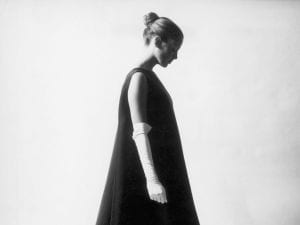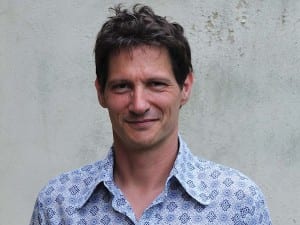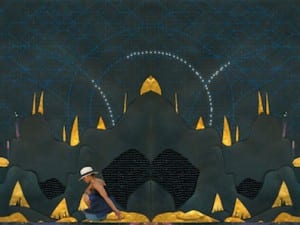Review by Mallory Nanny, a candidate for the MA in Art History at Richmond the American International University in London.
Located in the lively art scene of Vyner Street, Wilkinson Gallery currently boasts two exhibitions with work reflecting different approaches of life. The lower gallery contains a collection of untitled photographs by Czechoslovakian artist Miroslav Tichý from the 1960s, as the floor above houses a conceptual exhibition entitled My Teacher Tortoise by contemporary Japanese installation-artist, Shimabuku.
Because the photographs of the recently-deceased Czech artist come directly from his personal archives, they are shown in a minimalist fashion without the addition of labels. Contrary to the large, open space of the gallery, the framed works are small in scale to offer the spectator a private viewing. This is particularly interesting considering the voyeuristic approach taken to the work in the collection. Tichý used a homemade camera that he assembled from found objects, such as toilet rolls, tin boxes, and bottle caps, as well as a makeshift photo enlarger to produce his images. Each photograph contains a number of imperfections –some are discolored spots resulting from the printing process, while the majority involve scratches, creases, and spattering of pigment that result from rodent exposure as well as the artist’s personal use of them as coasters.
Following in the practice of street photography, Tichý documents spontaneous moments of women throughout the streets of his hometown, Kyjov. Although the photographs appear unstaged, the artist captures his sitters in positions that exude sexuality, like that of a woman inserting a finger in her mouth while seemingly cupping her breast. Another image depicts a woman licking an ice-cream cone while standing with her legs apart. By removing the context of these photographs, Tichý is able to erotize these women who were unaware of his camera. Other photographs are cropped to exhibit certain areas of the female body, such as a clothed bum or a bare chest. The absence of heads in both images eliminates their identities, causing them to become fetishized objects rather than individuals. In his attempt to reinvent the nude, Tichý closes the gap between high and low art through combining areas of realism and pornography. When men are present in his photographs, they are either oddly-cropped or blurred into silhouettes in the background. Thus women are emphasized as the central focus in Tichý’s personal collection.
As a non-conformist working under Communist rule, it is important to take notice of the political symbolism underlying in Tichý’s photographs. The blurred focus, rapid sense of movement, and unbalanced composition within the works not only imitate the Czech government’s widespread surveillance project of the period, but satirize it as well. While his work conveys the invasive and politically unjust issues of the time, it also illustrates a demoralizing view of 1960’s Czech women as sexually available.
While My Teacher Tortoise is the title of Shimabuku’s exhibition, it also refers to the show’s highlight which assumes the same title. Centered along the back wall of the gallery is a box-like structure that encloses an open, minimalist habitat fit for a tortoise. Suspended from the ceiling is a heat lamp to recharge the cold-blooded fellow with energy. He finds nourishment in a small alcove that is heaping with soft hay, encapsulated in the far-right corner. The title suggests that we can learn something from the tortoise, a renowned symbol of wisdom and thoughtfulness. When standing against the left side of the installation, in view of the tortoise’s shaded retreat spot, the text painting displayed on the opposite wall becomes all the more clear. It reads: “Stop. Stop and Think. Return. Occasionally Run,” before the artist addresses a Stephen Hawking quote that states “Man should try to avoid contact with alien life forms.” While Shimabuku’s presentation of the text is undoubtedly more beautifully-crafted than mine, it is important to mention it due to the conceptual dialogue that exists between both works. In connection to My Teacher Tortoise, the artist de-contextualizes Hawking’s advice on encountering extraterrestrials in order to encompass all life forms that are alien to us. He encourages us to follow, enjoy, and embrace our curiosities while also literally advising us to “stop and think.”
Similarly, the video installation entitled Leaves Swim presents us with the unknown and challenges our mindful attempts to define the bizarre. Viewed from a single perspective, the film focuses on a leafy sea dragon moving underwater at a close distance. This rare sea creature that appears to possess leaf-like appendages is unfamiliar to many and undoubtedly marvelous in nature. The soft and seemingly effortless motion of the underwater seahorse creates a rhythmic force that captivates the viewer. Simply by bringing it into the gallery, Shimabuku has translated this aspect of natural life into an artistic language as to provide us with a spectacle of the world’s hidden beauty. Through his artistic practice, he offers us the opportunity to embrace and admire what we do not understand, rather than searching for solutions to answer what we judge to be alien and strange.
Miroslav Tichy and Shimabuku continue at Wilkinson gallery until 5 June. Please visit www.wilkinsongallery.com for further information.
Image:
Shimabuku
My Teacher Tortoise, 2011
Mixed media installation
Installation dimensions variable





